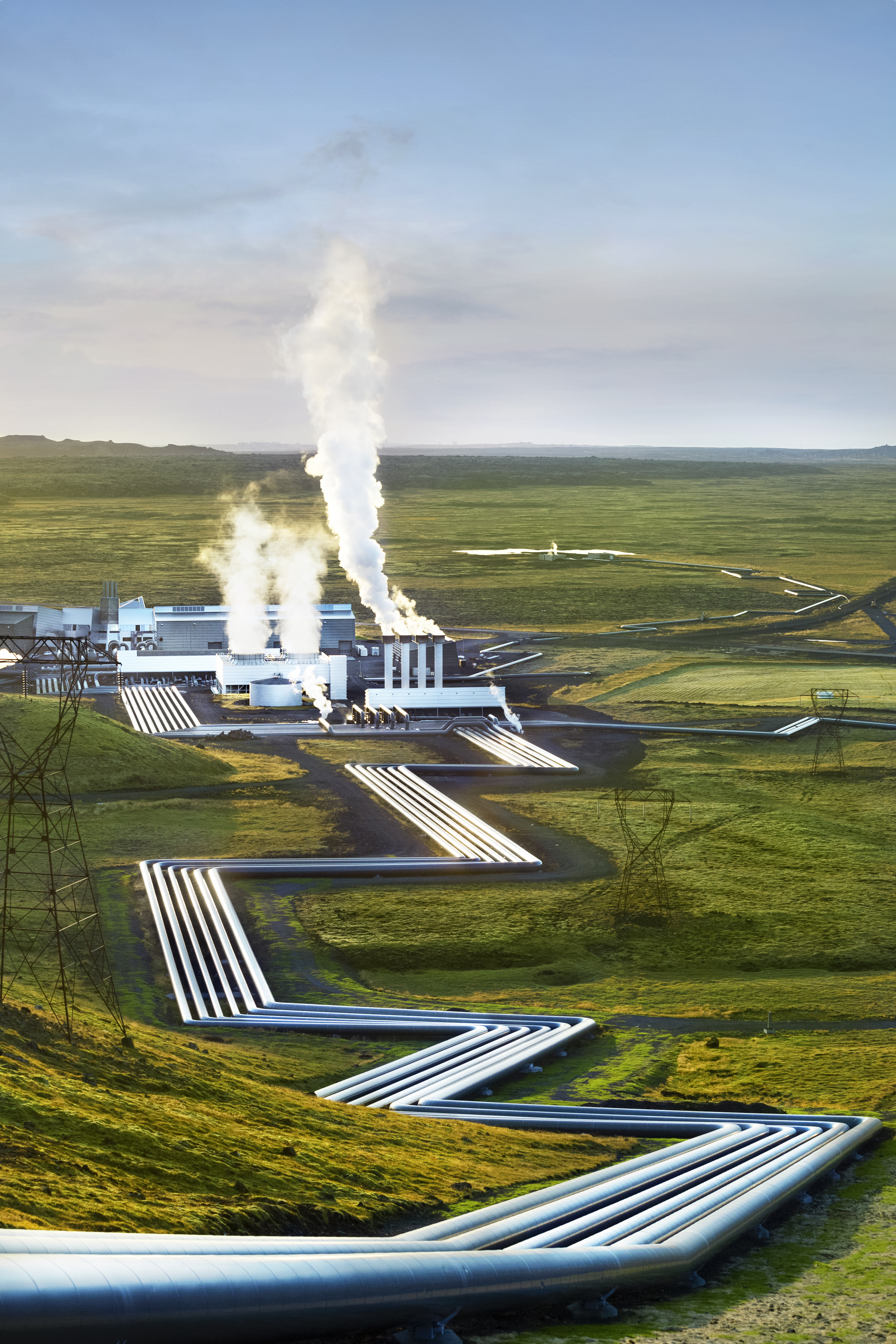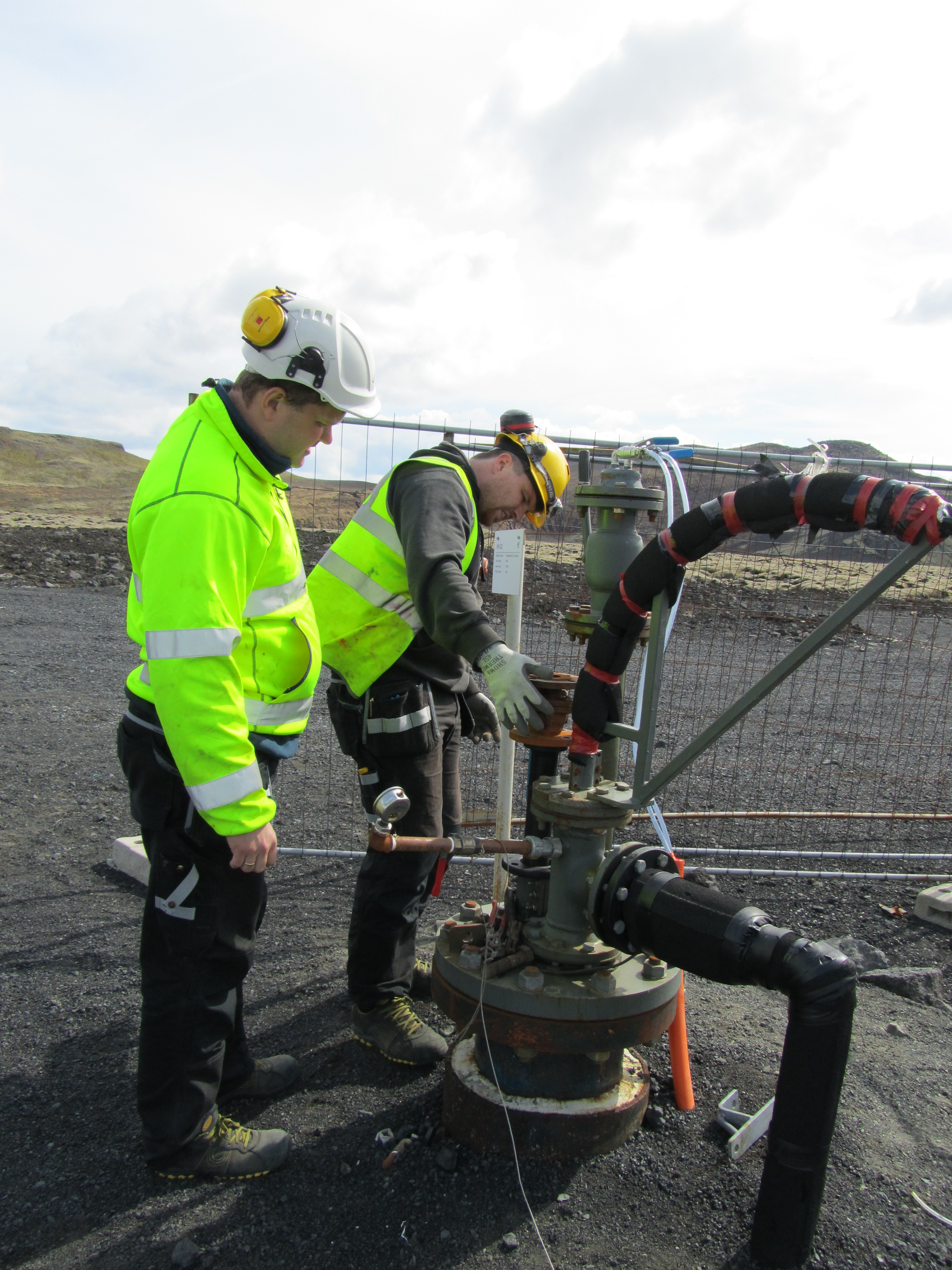Why even small reductions in warming matter to the Arctic — and how one Icelandic company hopes to help
A difference of half a degree Celsius would make a huge difference in the future of the Arctic. A carbon sequestration project in Iceland offers hope of keeping warming under control.

Half a degree difference in temperature may seem inconsequential, but it matters a great deal in the Arctic.
The Earth has already warmed 1 degree Celsius (1.8 degrees Fahrenheit) since the 19th Century, but the Arctic is warming two or three times faster. Now, a recent United Nations report is looking at what is likely to happen if global temperatures vault past 1.5 to 2C — and the Arctic heats up even more.
“The Arctic takes a leading role in the concerns expressed in the report,” Hans-Otto Pörtner, a senior scientist at the Alfred Wegener Institute and one of the report’s 91 authors, said during the Arctic Circle Assembly in Reykjavik, Iceland last month.
Half a degree could be the difference between having summer Arctic sea ice or not. Under 1.5C of global warming, the Arctic Ocean is likely to be ice-free in the summer once in a century. That risk rises to once per decade at 2C. The change would affect organisms on all levels, from algae and copepods to fish, whales and other marine mammals — and the people who rely on them for food and other uses.
Warming of 2C would also bring a later ice freeze-up and a longer ice-free open water season. There would be more storm surges and extreme weather events, and accelerated permafrost thaw. If warming remained at 1.5C, on the other hand, approximately 2 million square kilometers of permafrost — an area larger than Alaska — would remain frozen. In Alaska alone, the impact of climate change on public infrastructure could cost as much as $5.5 billion.
The Arctic has already endured the strain of global warming. For example, land ice loss has doubled since 2008. Canada’s Arctic glaciers are melting faster than ever before due to warming air temperatures; in the past 16 years, five glaciers have been lost entirely.
Greenland’s ice sheets could begin to destabilize with warming of 1.5 to 2C, the report warns, surrendering coastlines to sea-level rise for centuries. The melt water from Arctic glaciers and ice caps is already responsible for 35 percent of global sea-level rise.
Under current warming, global temperatures will reach 1.5C around 2040. If countries were to do little or nothing to curb greenhouse gas emissions, global temperatures would continue to rise.
If that happens, winter temperatures in the Arctic could warm by 10-12C by the end of the century, said Marianne Kroglund, chair of the Arctic Monitoring and Assessment Program. “It is putting human safety and livelihoods at risk. If we do not cut emissions we will be on the road to hell.”
Injections of optimism
Limiting global warming to 1.5C would require emissions to drop by about 45 percent from 2010 levels by 2030, reaching ‘net zero’ around 2050, according to the report. This means that any remaining emissions would need to be balanced by removing carbon dioxide and other greenhouse gases from the air.
“It is within the laws of physics to keep global warming to 1.5C. We have technology solutions to take us to the 1.5C world,” said Pörtner.
One of those promising technologies grew out of Iceland’s grey and green landscape, just 25 kilometers east of Reykjavik.
At the Hellisheidi geothermal power plant, carbon dioxide is being pulled from the industrial process before it enters the atmosphere and pumped underground, where it is turned into stone.
Although geothermal energy is considered to be “green,” power plants like Hellisheidi do emit carbon dioxide and other greenhouse gases. Hellisheidi emits about 3 to 5 percent of the carbon dioxide released by a typical coal-burning power plant.
The CarbFix site at the power plant stores about 12,000 tonnes of carbon underground annually, about 35 percent of the plant’s carbon output. The vision, however, is to bring its output to zero after all of the plant’s high-pressure turbines are connected to the process.
Here’s how it works: Carbon dioxide is removed from the steam that turns the power plant’s turbines. It is then dissolved into water and sent more than 700 meters underground, where it reacts with the basalt and forms minerals. A dark grey rock core drilled from the storage site contained white flecks and seams of mineralized carbon dioxide.
During the pilot phase, 95 percent of the injected carbon had mineralized within two years, said Edda Sif Aradóttir from Reykjavik Energy. “With industrial-scale injections it is happening even faster.”
It’s a method that can be used in other parts of the world, at power plants, industrial cement factories or other sources of carbon dioxide emissions. Basalt is widespread across the globe — it is one of the most common rock types on Earth and abundant in the ocean floor.
More recently, Reykjavik Energy has partnered with the Swiss company Climeworks to directly capture carbon dioxide from the ambient air and store it as rock.
The process also works with gas mixtures, including hydrogen sulfide. Other processes may require the gases to be separated, which can drive up the cost of capture and storage. Aradóttir says it costs less than $25 to inject a tonne of gas.
To have a global effect, technologies like this have to see widespread adoption. “The method isn’t patented. Anyone can take it up,” said Aradóttir. But no one has.
“In my opinion, it is the lack of sticks and carrots,” she said.
Pledges aren’t enough
Adding up the national pledges that make up the Paris agreement aren’t enough to meet the 2C goal, let alone limiting warming to 1.5C. Instead, they would put the world on course for 3C of warming.
“We are lacking charismatic leaders standing up for this. We don’t hear those charismatic statements to take us to a better and sustainable future,” said Pörtner.
One of those ‘sticks’ is to price carbon through a tax or cap-and-trade system. The idea is to make carbon-intensive energy more costly, leading industries and consumers to opt for less carbon-heavy services. It might also prompt industries and countries to invest in carbon capture and storage technologies, and to develop new ones.
More than 40 countries and 20 cities, provinces or states have carbon-pricing mechanisms in place. Of the Arctic nations, the United States, Russia and Greenland do not have one in place. A recent climate plan submitted to Alaska’s outgoing governor, Bill Walker, included a carbon-pricing proposal, which wasn’t immediately endorsed by the governor.
“There is no place for free-riders in the years to come,” said Kroglund.




